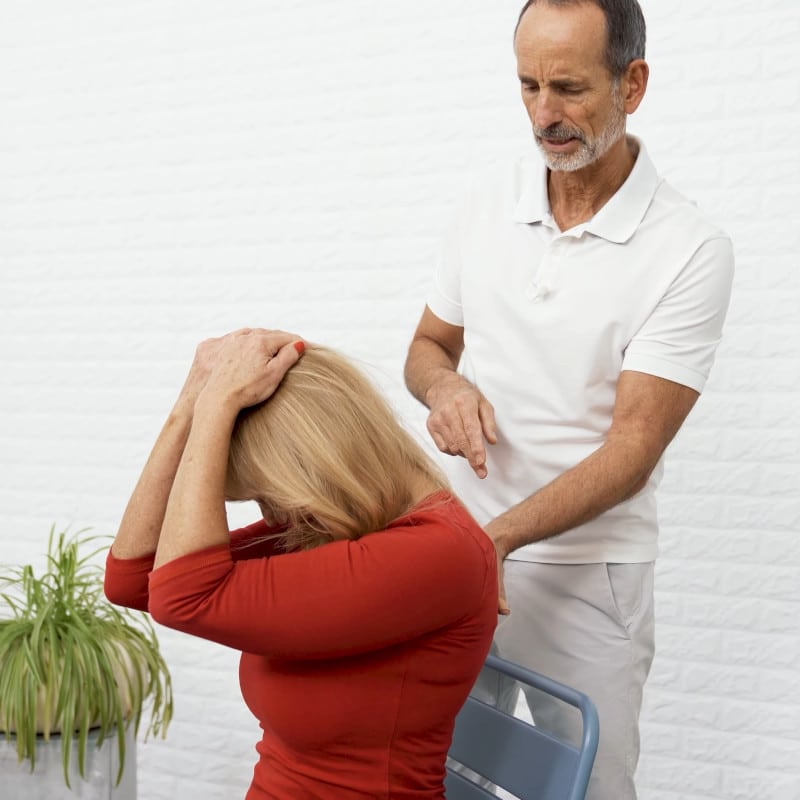Cluster Headache treatment
Body Part:
Head
Equipment:
None
Level:
Beginner
Body Part:
Head
Equipment:
None
Level:
Beginner
Of the more than 150 different types of headaches that have been defined, cluster headaches are the most painful. They are also the rarest, affecting one in 1,000 people. Cluster headaches occur on one side of the head1) causing excruciating pain around or behind the eye.
In addition to drug treatments, high-flow oxygen inhalation has proven to be an effective cluster headache treatment. The treatment is administered at the beginning of a cluster headache attack. Patients wear a face mask that delivers 100% oxygen at a rate of 12 litres per minute for 15 minutes.3)
Cluster headaches occur in cycles which can last from weeks to months. Cluster periods may be seasonal, beginning and ending around the same time.
There are two types of cluster headaches: episodic and chronic. Episodic cluster headaches, (most common) occurs over weeks or months or up to a year, followed by a period of remission. Pain-free periods can last from a few months to a year before the headaches begin again. Chronic cluster headaches lasts for longer than a year.
A cluster headache can last from 15 to 180 minutes.4) Cluster headache attacks occur anywhere from once every other day up to eight times a day, usually striking at the same time each day. Some people get cluster headaches one or two hours after falling asleep, waking up from intense pain.
Cluster headaches strike quickly, reaching peak intensity within minutes. Symptoms include:
Avoiding triggers during a cycle can help prevent cluster headaches. Triggers include:
Cluster headaches are not life-threatening. However, in some cases, headaches can be a sign of a serious medical condition. If you’ve recently begun experiencing cluster headaches, scheduling a visit with your doctor is important.
Almost half of cluster headache sufferers who participated in a recent study complained of persistent, mild migraine symptoms occurring between cluster headaches. 5) The headache pain may be caused by the increased muscle tension in the neck and shoulders that occurs during a cluster headache attack. Muscle and fascial tension can be compounded (leaving you vulnerable to headaches) if you lead a sedentary lifestyle or if most of your daily movement is unilateral.
Stretching the muscles and fascia in the neck and shoulders can reduce the tension that has built up and may help relieve pain.

Sign up for our free newsletter and discover how to manage your pain yourself. Every two weeks, we’ll deliver follow-along videos and articles to your inbox.




Download our FREE PDF guide featuring our 6 most effective exercises for preventing and getting rid of headaches & migraines.

Then we would be happy if you shared it with your friends: